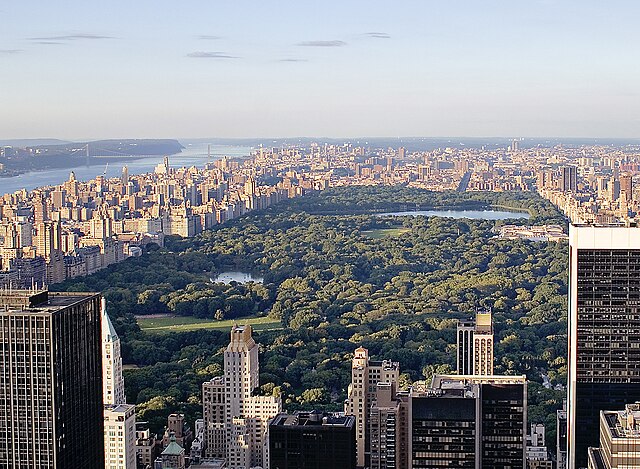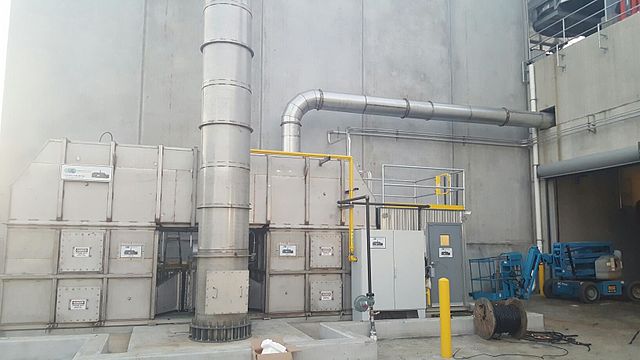Urban areas usually experience the urban heat island (UHI) effect, that is, they are significantly warmer than surrounding rural areas. The temperature difference is usually larger at night than during the day, and is most apparent when winds are weak, under block conditions, noticeably during the summer and winter.
The main cause of the UHI effect is from the modification of land surfaces while waste heat generated by energy usage is a secondary contributor. A study has shown that heat islands can be affected by proximity to different types of land cover, so that proximity to barren land causes urban land to become hotter and proximity to vegetation makes it cooler. As a population center grows, it tends to expand its area and increase its average temperature. The term heat island is also used; the term can be used to refer to any area that is relatively hotter than the surrounding, but generally refers to human-disturbed areas. Urban areas occupy about 0.5% of the Earth's land surface but host more than half of the world's population.

Dense urban living without green spaces lead to a pronounced urban heat island effect (Milan, Italy)
Example of an inner city green space which reduces the urban heat island effect (Central Park, New York)
Example of dense urban living: High-rise buildings of Manhattan during sunset
Example of urbanization: Dubai
Waste heat is heat that is produced by a machine, or other process that uses energy, as a byproduct of doing work. All such processes give off some waste heat as a fundamental result of the laws of thermodynamics. Waste heat has lower utility than the original energy source. Sources of waste heat include all manner of human activities, natural systems, and all organisms, for example, incandescent light bulbs get hot, a refrigerator warms the room air, a building gets hot during peak hours, an internal combustion engine generates high-temperature exhaust gases, and electronic components get warm when in operation.
Thermal oxidizers can use a regenerative process for waste heat from industrial systems.
Air conditioning units extract heat from a dwelling interior with coolant, and transfer it to the dwelling exterior as waste. They emit additional heat in their use of electricity to power the devices that pass heat to and from the coolant.
Cooling towers evaporating water at Ratcliffe-on-Soar Power Station, United Kingdom







